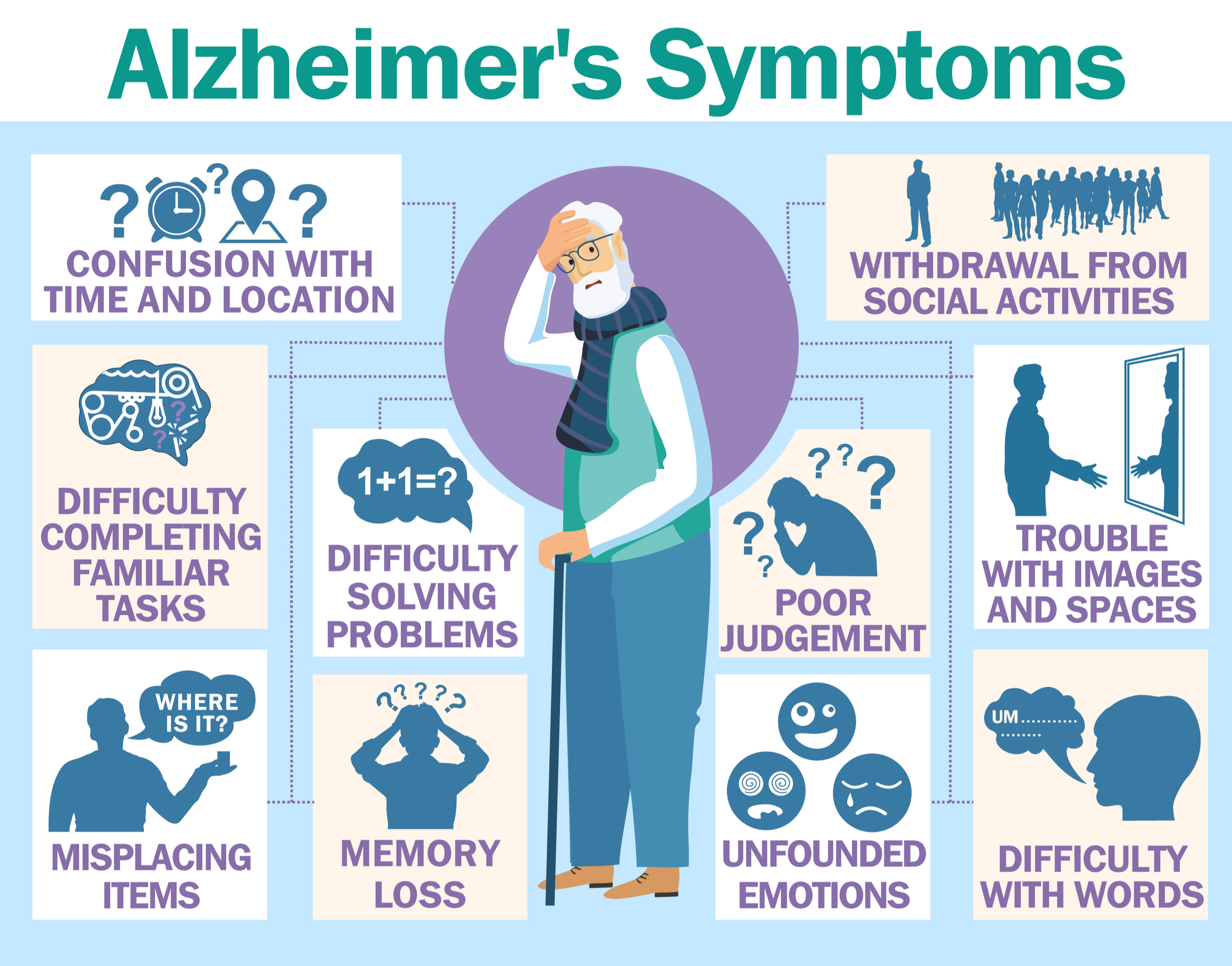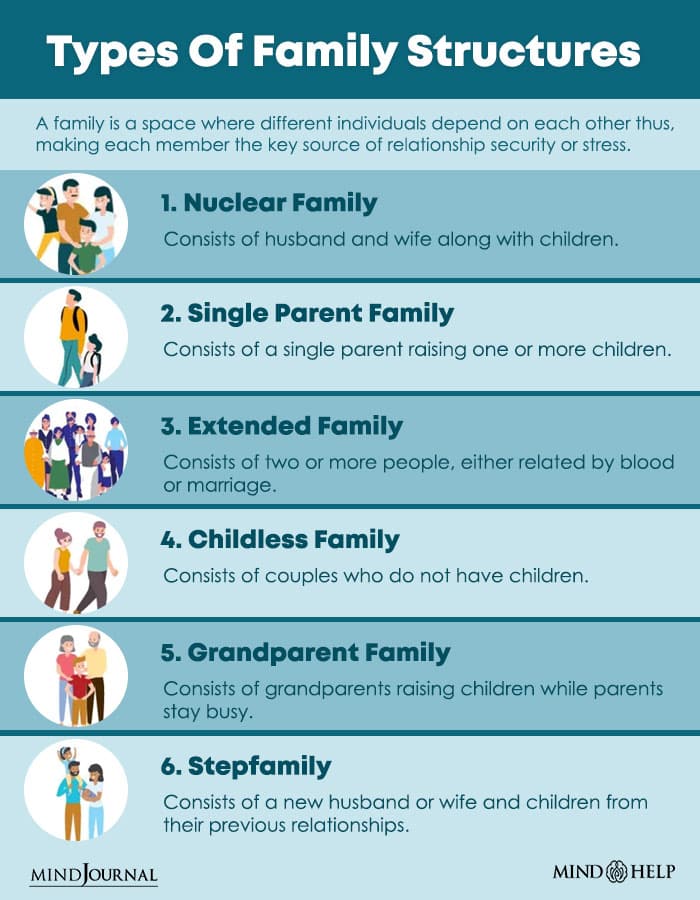Alzheimer’s disease is a neurodegenerative disorder that can cause memory loss and changes in a person’s cognitive abilities. Plaques and tangles in particular are responsible for damaging and killing nerve cells. Abnormal levels of a protein called beta-amyloid builds up in the spaces between nerve cells forming plaques and accumulation of tau inside neurons can form tangles that disrupts cell function and blocks communication between other neurons (Touhy & Jett, 2020). Many areas of the brain eventually become damaged and overtime a person with Alzheimer’s disease gradually loses their ability to function independently. Furthermore, there are several risk factors associated with this condition such as genetics, environmental factors, head injuries, increasing age, and vascular diseases like hypertension and hyperlipidemia (Breijyeh et al., 2020).
The symptoms of Alzheimer’s disease can progress
slowly. It may start off as having trouble remembering things then overtime it
can worsen to the point where a person can’t take care of themselves. Memory
loss, difficulty in word-finding, impaired reasoning, changes in personality
and behavior are all symptoms that can be expressed with Alzheimer’s (Pinyopornpanish
et al., 2022). As the symptoms begin to worsen overtime some may experience
major confusion about what’s happened in the past verses what’s happening now,
they may develop problems with swallowing, controlling their bladder or bowels,
and have a hard time moving around.
There are pharmacological and non-pharmacological therapies
that can be used to treat Alzheimer’s disease. Cholinesterase inhibitors such
as donepezil, galantamine, and rivastigmine are medications that can be used to
slow cognitive decline and can control difficulties in behavior (Touhy &
Jett, 2020). These medications can help improve a person’s quality of life and
help them function a little longer. A non-pharmacological treatment such as reality
orientation can help improve an individual’s orientation to time and place.
There are strategies that can promote a person’s
health, well-being, and quality of life while having Alzheimer’s disease. One
specific strategy would be to exercise regularly and be involved in activities
such as walking and swimming. Building muscle and performing balance exercises
can keep the brain healthy and prevent falls or head injuries (HelpGuide, 2022).
Another strategy is to be socially engaged with people by joining a group or
volunteering. As older adults age they may become isolated which can lead to
depression and other mental health issues. Therefore, it’s important to connect
with people and maintain relationships. A third strategy would be to eat a
healthy diet by decreasing the amount of sugar consumed and eating plenty of
fruits and vegetables. Furthermore, it is healthier to cook home-made meals
than buying fast food that is high in sodium and fat. Keeping yourself mentally
stimulated is a strategy that helps maintain cognitive functioning. Learning a
new language or instrument can stimulate the brain. Also, playing strategy
games and puzzles such as Scrabble or Sudoku can give the brain a good mental
workout. Another strategy to promote a person’s health and well-being is to get
enough sleep at night. Sleep deprivation can further deteriorate an individual
with Alzheimer’s, so creating a sleep schedule is essential.
There are local services and resources available to
help with individuals and families coping with Alzheimer's disease such as Granny Nannies and Crane’s View Lodge. The first service provides
short-term or long-term care to older adults with Alzheimer’s and can assist
with mobility, meal preparation and much more (Granny Nannies, n.d.). Granny
Nannies is located at 1150 West Minneola Ave., Clermont, FL, 34711. The contact
information and website are 352-536-2511 and https://grannynannies.com/Clermont/Services/Alzheimers-Care.
Crane’s View Lodge is an assisted living facility that cares for seniors with
cognitive impairments in a unit called Memory Care. They provide a comfortable
and stimulating environment for these seniors and help with activities of daily
living (Crane’s View Lodge Senior Living, n.d.). It is located at 1601 Hooks
St, Clermont, FL 34711. The contact information and website are 352-432-1515
and https://www.allegroliving.com/cranes-view-lodge-clermont.html.
Alzheimer’s disease can definitely affect a person’s daily life and how they interact with others. It is important to understand the effects Alzheimer’s has on the brain, the symptoms and treatments involved, and the strategies used to promote health, well-being, and quality of life. Furthermore, there are resources available to those that need some extra help with their condition.
References
Breijyeh, Z., Karaman, R., Muñoz-Torrero, D., & Dembinski, R. (2020). Comprehensive review on alzheimer’s disease: Causes and treatment. Molecules, 25(24), 5789. https://doi.org/10.3390/molecules25245789
Crane’s View Lodge Senior Living. (n.d.). Crane’s view lodge – Clermont. https://www.allegroliving.com/cranes-view-lodge-clermont.html#living-panel2
Granny Nannies. (n.d.). Alzheimer's home care clermont. https://grannynannies.com/Clermont/Services/Alzheimers-Care
HelpGuide. (2022, September 2). Preventing alzheimer’s disease and dementia—or slowing its progress. https://www.helpguide.org/articles/alzheimers-dementia-aging/preventing-alzheimers-disease.htm
Medical News Today. (n.d.). Aerobic exercise may be key for alzheimer's prevention. https://www.medicalnewstoday.com/articles/320770
Pinyopornpanish, K., Soontornpun, A., Wongpakaran, T., Wongpakaran, N., Tanprawate, S., Pinyopornpanish, K., Nadsasarn, A., & Pinyopornpanish, M. (2022). Impact of behavioral and psychological symptoms of alzheimer’s disease on caregiver outcomes. Scientific Reports, 12(1), 1–9. https://doi.org/10.1038/s41598-022-18470-8
Touhy, T.A., & Jett, K. (2020). Ebersole & hess’ toward healthy aging: Human needs & nursing response (10th ed.). Elsevier.
UrgentTeam. (n.d.). Determining alzheimer’s
symptoms. https://www.urgentteam.com/healthy-living-tips/determining-alzheimers-symptoms/



